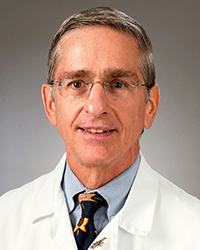Combination Drug “Cures” Hepatitis C in Children and Adolescents
Combination Drug “Cures” Hepatitis C in Children and Adolescents
No Trace of Virus Found in Blood of Patients After Treatment
Wednesday, March 22, 2017
The first pediatric study of a combination drug to treat the hepatitis C virus (HCV) infection in children and adolescents demonstrated 100 percent effectiveness in adolescents who completed the 12-week, phase II clinical trial.
If approved for use in teens, ledipasvir-sofosbuvir (a combination of two anti-viral agents marketed as Harvoni®) could dramatically improve care for patients who currently have limited treatment options.
“While not the only way to contract HCV, cases of hepatitis C have been increasing for several years among those who inject opioids, and infections have reached epidemic proportions in most states among this population,” says William Balistreri, MD, medical director emeritus, Pediatric Liver Care Center, Cincinnati Children’s Hospital Medical Center, and lead author of the study.
“In the Cincinnati Children’s area, there has been an increase of more than 350 percent in HCV infection among people 12 to 29 years old, which of course includes women of childbearing age who may pass the infection on to their newborn infants. We estimate a 450 percent rise in cases of HCV among children and adolescents at Cincinnati Children’s since 2009.”
About 80 percent of adolescents in the study had been infected during the perinatal period, when the virus was transmitted from mother to child. Standard screening for HCV in pregnant women may be appropriate, says Balistreri.
The study is published online ahead of print in the journal Hepatology.
The study was conducted between Nov. 2014 and Oct. 2015 at 24 sites across the United States, the United Kingdom and Australia. One hundred 12 to 17 year olds received Harvoni once daily for 12 weeks in a dosage already proved effective in adults.
The researchers were looking for a reduction of HCV in the blood during treatment and a sustained response – an absence of detectable virus – 12 weeks after treatment. Two patients did not complete the treatment and were lost to follow up, but all 98 patients who completed the trial successfully reached a virologic response. The combination drug showed that all patients were “cured,” meaning that HCV was not detected in the blood 12 weeks after treatment.
No serious adverse events were reported. The most commonly reported adverse events were headache, in 27 percent of patients; diarrhea, in 14 percent of patients; and fatigue, in 13 percent of patients.
Hepatitis C is a contagious liver disease that ranges in severity from a mild illness lasting a few weeks to a serious, lifelong illness that attacks the liver. It results from infection with HCV, which is spread primarily through contact with the blood of an infected person. Most people become infected with HCV by sharing needles or other equipment to inject drugs. Hepatitis C can be either “acute” or “chronic.”
Of those who become infected with HCV, most do not have symptoms. But approximately 75 to 85 percent go on to develop chronic infection. It’s estimated that 2.7 to 3.9 million in the United States have chronic hepatitis C.
If a person has been infected for many years, his or her liver may be damaged. In many cases, there are no symptoms of the disease until liver problems have developed. In persons without symptoms, hepatitis C is often detected during routine blood tests to measure liver function and liver enzyme (protein produced by the liver) levels.
Funding for this study was provided by Gilead Sciences, Inc. Several researchers involved in the study received grant support from Gilead Sciences, serve as consultants to Gilead Sciences, or are employees of Gilead Sciences. A complete list of disclosures is available on the published manuscript.
Contact Information
Jim Feuer513-636-4656




